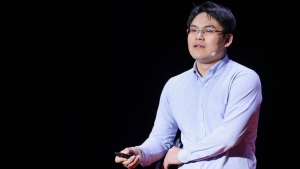Poll:How do Pro-Palestinian campus protests boost communist appeal in China?
For the Chinese youth, the current pro-Palestine protests at U.S. universities feel oddly reminiscent of a revolutionary chapter in China’s modern history: the May Fourth Movement in 1919. A harbinger of the rise of communism in China , the May Fourth Movement bear witness to an awakening body of student protestors and a ruthless authority who tried to silence the outcry. The association has driven many Chinese youth to sympathize deeply with the current student demostrators in the US, and at the same time remain realistic about what the demonstrations can accomplish.
To explore this issue further, we conducted a survey on Bilibili and Weibo, posing the question: “How do you view the U.S. students’ pro-Palestine protests and their potential implications?” Bilibili and Weibo rank among the most popular social media platforms for China’s Generation Z. Drawing on the total 2,199 votes collected and the vibrant comment sections, we arrived at several interesting conclusions.
(Note: Details about the gender and age distribution of the survey participants are provided at the end of this article.)

Key Observations
The survey was conducted from April 28 to May 12. The most notable result of this vote is that 93.9% of Chinese netizens support the pro-Palestinian protests by American students, but only 10.18% believe that the U.S. government will honor the wishes of the students.
While Chinese netizens’ support for the protesting students partly stems from the simple desire for peace, another source of such support lies in the association between current student protest in the US with China’s own revolutionary history. The demands of the protesting students in the US that the US government should cease supporting Israel are seen by the Chinese youth as aligned with the anti-imperialistic goals of the May Fourth Movement. At the same time, widely-circulated videos of students being arrested and dispersed on US campuses have convinced people of the inevitable failure of such student protests.
Here are some of the pivotal moments when the image of American police was reshaped on the Chinese internet:
When students at Columbia University set up the protest camp on April 17th, the Chinese internet soon picked up the news, though few people paid extra attention. It wasn’t until the US police arrested dozens of protesting students on the 18th when the news captured the attention of the whole Chinese society. The perceived contradiction between the behavior of US law enforcement agencies and the long-publicized image of as a defender of freedom of speech, publication, and association sparked extensive discussions.
Using Weibo as an example, the following accounts played a key role in shaping the public perception of the pro-Palestinian protests by American students:
1)Accounts of professional media outlets such as the Global Times, Guancha.cn, and RT
On April 24th, China’s state media the Global Times published a post summarizing and compiling news reports on police arresting protesting students at several universities, citing multiple American media sources. The article also quoted US President Biden’s characterization of the student movement as “anti-Semitic”. This report garnered over 200,000 views and 1620 comments within the Weibo platform alone.

It’s worth noting that the siginificance of a state media taking a stance on the issue far outweighs the data performance of the post. While Chinese netizens don’t necessarily all agree with the viewpoints of the Global Times, it provides both supporters and opponents of such viewpoints with a reference point, which serves as the basic fulcrum for both sides in future discussions.
In addition, the Global Times created the hashtag #US Police Arrest Students and Teachers Who Support Palestinian# when publishing its article. Through Weibo’s algorithm, future posts with the same tag be grouped together, thus synthesizing relevant information and opinions on US student protests. It is in effect creating a virtual plaza for people to exchange their viewpoints on the issue. Granted, individuals and private media outlets can also create tags, Weibo’s algorithm would never give them similar weight as it did the Global Times. It can be said that China’s state media such as the Global Times and CGTN provided a platform for a broader social debate.
Additionally, the account @钧正平, which is an account run by the Chinese military, took an even harsher tone in commenting the event by condemning the US authorities. On April 25th, it commented, “Some US officials do not dare to confront the reasons for people’s anger. Instead, they claim that the protesting students are being influenced by ‘external agitators’ disrupting order. In the face of such powerful US military and police presence, what kind of ‘external agitators’ would have the power to convince young people willingly risk their own lives by confronting guns and batons directly? The US should be hereby strongly urged: stop spreading baseless accusations and refrain from wrongdoing!” This comment received over 400,000 views, further solidifying the public’s understanding of the official stance.

2) Influential political commentators and opinion leaders
After professional media outlets made their stance known on the issue, opinion leaders and commentators soon followed suit. Many of them associated the current campus protests in the U.S. with China’s modern revolutionary history, giving rise to unexpected dynamics. The following post,vpublished on April 24th by @平原公子赵胜, serves as the perfect example. As a well-known influencer in the sphere of current affairs commentary, @平原公子赵胜has received over 270,000 views for his post on the US student protests.

By applying Mao Zedong’s revolutionary narrative to describe the campus protests at Columbia University as “a single spark” about to igniate across the nation, @平原公子赵胜 has successfully responded to the expectations of a group of audiences in China. In the comment section of previous posts by the Global Times, the most liked comment reads “this is America’s May Fourth Movement.” In a way, Chinese opinion leaders and commentators reprocessed the information and viewpoints drawn from media organizations before crafting narratives that can better resonate with the local audience.
The May Fourth Movement, initiated by enraged student protesters in China, was an act of defiance against imperialist powers who compelled China to cede land to colonialists after the WWI. Though the United States and China vary in historical backgrounds and cultures, the shared goal of anti-imperialism helped Chinese audience draw the connection. Additionally, with the prevalent news of Israeli military killing Palaestinian civilians, especially children, Chinese audience see in Palestine the China under Japanese invasion, and in Israel, a brutal colonialist power reminiscent of Japan. This emotional projection has fueled the popularity of the narrative comparing the US student protest to China’s May Fourth Movement.
3) Individual social media users who repost images and videos of protest scenes
If political commentators and opinion leaders had provided for the Chinese audience a framework for understanding the US student protest, it were individual users of Chinese social media who worked to substantiate such imagination by reposting videos of student protests from Twitter and TikTok. In contrast to the lengthy discourses from official media and opinion leaders, post from individual users come with only brief , explanatory texts, but powerful videos. Clearly, their pictures are worth a thousand words, as these posts on average garners an average of 30,000 to 100,000 views. By utilizing social media tags made for the US student protests, they have managed to tap into shared channels of traffic.

Taking the hashtag #US Campus Conflict Escalates# as an example, a total of 96,000 discussions about US students’ pro-Palestinian protests have chosen to use this tag, contributing numerous on-the-scene images and short videos including those depicting American police violently arresting students. The total view of all discussions using the hashtag has now reached 170 million.

The association between the US student protest and the May Fouth Movement has prompted an analogy between US police and the Beiyang government, the ruling authority of China at that time , which violently suppressed the student protests in the May Fourth Movement. Given the Beiyang government was overthrown by a revolution, not peaceful student protests, Chinese netizens tend to hold a pessimisitic view regading the changes the US student protest can realistically bring about. The following viewpoints are summarized from interviews with the respondents of our poll.
“Even if there is some influence, it is extremely limited. At this stage, there are no indications that the students’ attitudes can affect those policymakers. Additionally, the student activities lack a unified or leading plan and are still at the stage of appealing. This movement is in its very initial phase, and I believe it will not have much impact.”
“Without violence to counter the violent machinery, how can change be driven?”
“These students support Palestine from a humanitarian standpoint, which is certainly commendable. However, on one hand, the upper class of the US government still firmly holds the power of discourse and decision-making, making it difficult for the students’ strength to compete. On the other hand, students constitute too small a portion of the overall society, do not control any means of production, and thus find it difficult to become a significant force.”
It’s evident that by viewing US student protests through the lens of China’s own revolutionary history, the Chinese audience see an erosion of the image of US as a defender of democracy, an image further underscored by the violence of the US police.
Participant Profile
This survey primarily targeted subscribers of Wave Media on Bilibili and Weibo.
The demographic breakdown reveals that 81.8% of respondents are male, while 18.2% are female.
Age-wise, 7.7% are under 16 years old, 31.3% are aged 16-25, 41.3% fall within the 25-40 age bracket, and 19.7% are 40 years old and above.
Geographically, the majority reside in southeast coastal areas of China, including Guangdong, Shanghai, Jiangsu, Zhejiang, and Beijing.
Editor: Charriot Zhai



